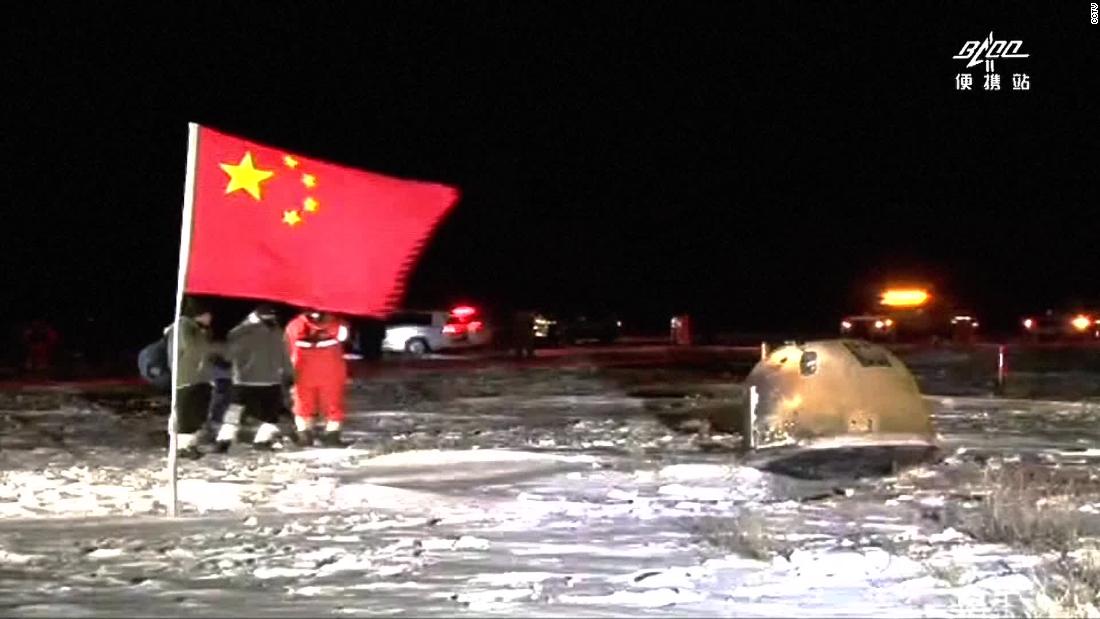Samples were recovered from a previously unexplored area on the moon’s surface. They are also the first samples to be collected by any country since the 1970s.
The return capsule landed in Banner Seziwang, which is located in the north of China’s Inner Mongolia Autonomous Region, just before 2 a.m. Thursday Beijing time (1 p.m. ET Wednesday), according to the China National Space Administration (CNSA).
The probe, named after the ancient Chinese moon goddess, first blasted off from the Wenchang spacecraft launch site in Hainan on November 24.
It landed on the near side of the Moon on December 1, on a huge lava plain known as Oceanus Procellarum, or “Ocean Storms”. According to NASA, this large dark spot could be a scar from a giant cosmic impact that caused the formation of an ancient sea of magma.
Samples from this region could help scientists understand more about the origins and foundations of the moon – and lay the groundwork for more complex sample retrieval tasks in the future, and possibly on other planets.
Bai said that Chinese scientists are already making plans to explore the moon in the future – including a project to build a science research station on the moon.
“We hope to cooperate with other countries to build an international lunar scientific research station, which can provide a common platform for scientific exploration on the moon and technological experiments,” Xinhua said.
The feat for China comes on the heels of the United States and the Soviet Union, which collected samples from the moon decades ago.
In the Apollo program, which put men for the first time on the surface of the moon, the United States landed 12 astronauts over six flights from 1969 to 1972, returning 382 kg (842 pounds) of rock and soil.
The Soviet Union deployed three successful mechanized sample return missions in the 1970s. The most recent, Luna 24, recovered 170.1 grams (6 ounces) of specimens in 1976 from Marie Crisium, or “Sea of Crisis.”












































